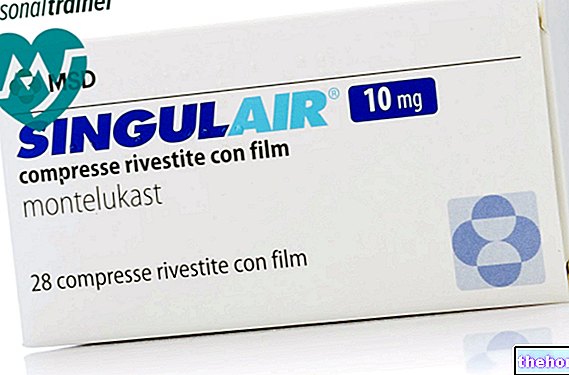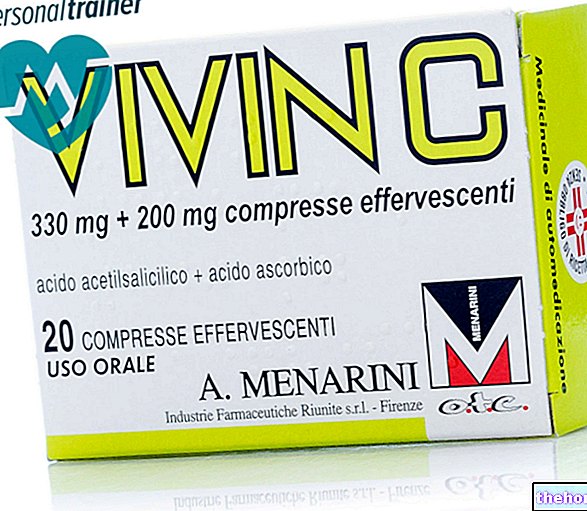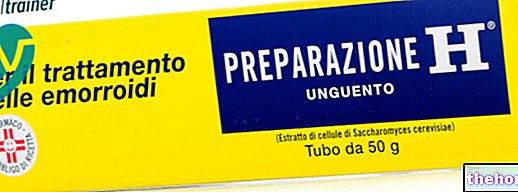Active ingredients: Levofloxacin
OFTAQUIX 5 mg / ml EYE DROPS
Oftaquix package inserts are available for pack sizes:- OFTAQUIX 5 mg / ml EYE DROPS
- OFTAQUIX 5 mg / ml EYE DROPS, solution, single-dose container
Why is Oftaquix used? What is it for?
Levofloxacin is a fluoroquinolone-type antibiotic (also called quinolone for short). The antibiotic works by killing some types of bacteria that can cause infections.
Levofloxacin in the form of eye drops is indicated for the treatment of bacterial infections affecting the anterior surface of the eye in children aged 1 year or older and adults.
One type of infection of this part of the eye is bacterial conjunctivitis, an infection of the anterior lining of the eye (conjunctiva
Oftaquix is not recommended for use in children under 1 year of age.
Talk to your doctor if you don't feel better or if you feel worse after 5 days.
Contraindications When Oftaquix should not be used
Do not use Oftaquix
- if you are allergic to levofloxacin, other quinolones or any of the other ingredients of this medicine
If you have any further questions, ask your doctor or pharmacist.
Precautions for use What you need to know before taking Oftaquix
Talk to your doctor, pharmacist or nurse before using Oftaquix
- if an allergic reaction occurs even after a single dose, do not use this medicine anymore
- if during treatment you experience worsening of your eye symptoms, contact your doctor as soon as possible
- if you do not feel any improvement within a certain treatment period agreed with your doctor, contact your doctor as soon as possible
- the use of any type of contact lens is generally not recommended as long as there is an infection in the eye
- Oftaquix contains the preservative benzalkonium chloride, which can cause eye irritation.
Children and adolescents
The special warnings and precautions for using this medicine are the same for adults, adolescents and children aged ≥ 1 year.
Interactions Which drugs or foods may change the effect of Oftaquix
Tell your doctor or pharmacist if you are using, have recently used or might use any other medicines.
In particular, tell your doctor or pharmacist if you use any other type of eye drops or ophthalmic ointment before you start using Oftaquix.
If you use other eye drops, wait at least 15 minutes between applying Oftaquix and any other type of eye drops.
Warnings It is important to know that:
Pregnancy, breastfeeding and fertility
If you are pregnant or breast-feeding, think you may be pregnant or are planning to have a baby, ask your doctor or pharmacist for advice before using this medicine. Oftaquix eye drops should only be used in pregnancy if the potential benefit justifies the potential risk to the fetus.
Although very small amounts of levofloxacin pass into the blood and breast milk, respectively, after applying the eye drops it is very unlikely that the eye drops will harm the baby.
Your doctor is aware of the potential risks and will tell you if you can take Oftaquix eye drops. Your fertility (the ability to become pregnant or father a child) is not affected if you apply Oftaquix according to the instructions for use.
Driving and using machines
Oftaquix has minor effects on the ability to drive or use machines. If using the eye drops causes blurring of vision, wait for this effect to pass before driving or using machines.
Dose, Method and Time of Administration How to use Oftaquix: Posology
Always use this medicine exactly as your doctor or pharmacist has told you.
If in doubt, consult your doctor or pharmacist. Oftaquix eye drops is a product for ophthalmic use and must be applied to the outer surface of the eye.
For patients over 1 year of age, the recommended dose is as follows:
DAY 1 - 2
- Apply one or two drops to the affected eye (s) every two hours.
- Apply a maximum of 8 times a day
DAYS 3 - 5
- Apply a drop or two in the affected eye (s).
- Apply a maximum of 4 times a day.
No dosage adjustment is required in elderly patients.
The total duration of the treatment is five days. Your doctor will be able to tell you how long to apply the drops.
If you use any other eye medicine, wait at least 15 minutes between each application of the various eye drops.
Use in children and adolescents
No dosage adjustments are required in children ≥ 1 year of age and adolescents. Oftaquix is not recommended for use in children under 1 year of age.
Before applying the eye drops
If possible, ask someone to put the drops in your eyes. Before applying the drops, ask the person helping you to read these instructions with you.
- Wash your hands.
- Open the bottle. Take special care to prevent the tip of the dropper bottle from touching your eye, the skin around the eyes, or your fingers.
- Tilt your head back and turn the bottle upside down over your eye.
- Pull the lower eyelid down and look up. Press lightly on the bottle and let a drop fall into the space between the lower lid and the eye.
- Close your eye and press your finger on the inner corner of the eye for about a minute. This prevents the eye drops from being passed into the tear canal.
- Remove any residual solution present on the skin around the eye.
- Put the cap back on and close the bottle tightly. If you need to apply another drop or treat both eyes, repeat steps 3 to 7.
Do not inject Oftaquix eye drops into the eyeball.
Overdose What to do if you have taken too much Oftaquix
If you use more Oftaquix than you should
If you use more Oftaquix than you should, rinse your eye (s) with water and consult your doctor or pharmacist.
If you forget to use Oftaquix
If you forget to use the drops, apply the next dose as soon as you remember. Do not use a double dose to make up for a forgotten dose.
If you ingest Oftaquix by mistake
The amount of levofloxacin contained in the bottle provided is too small to cause side effects. However, if you are concerned, consult your doctor or pharmacist, who will advise you on any necessary measures.
If you have any further questions on the use of this product, ask your doctor or pharmacist.
If you stop using Oftaquix earlier than indicated, it may delay the healing process.
If you have any further questions on the use of this medicine, ask your doctor, pharmacist or nurse.
Side Effects What are the side effects of Oftaquix
Like all medicines, this medicine can cause side effects, although not everybody gets them.
About one in ten people who use Oftaquix experience a side effect. Most of the side effects only affect the eye and do not last long. If you have any serious or persistent side effects, stop using the drops and consult your doctor urgently. The frequency of possible side effects is defined as follows:
very common: affects more than 1 user in 10
common: affects 1 to 10 users in 100
uncommon: affects 1 to 10 users in 1,000
rare: affects 1 to 10 users in 10,000
very rare: affects less than 1 user in 10,000
not known: frequency cannot be estimated from the available data
Very rarely this medicine can cause severe allergic reactions.
The following symptoms may occur as early as after applying a single dose of Oftaquix:
- swelling and tightness in the throat
- difficulty in breathing.
In rare cases it is possible to develop other allergic reactions. Symptoms of these reactions are:
- worsening of redness and itching of the eyes
- sudden increase or appearance of swelling in the eyelids.
If any of these symptoms develop, stop using Oftaquix and consult a doctor immediately.
Common side effects (affects 1 to 10 users in 100):
- burning sensation in the eye
- reduced vision or mucus in the eye
Uncommon side effects (affects 1 to 10 users in 1,000):
- stinging or irritation of the eye
- sore eyes
- dry or inflamed eyes
- swelling or redness (bloodshot eyes) of the conjunctivae (front lining of the eye) or eyelids
- unusual intolerance to light
- itchy eyes
- sticky eyelids
- headache
- rash around the eyes
- stuffy nose or runny nose
Rare side effects (affects 1 to 10 users in 10,000):
- allergic reactions, eg. rash
Very rare side effects (affects less than 1 user in 10,000):
- swelling and tightness in the throat
- difficulty in breathing
Additional side effects in children and adolescents
The frequency, type and severity of adverse reactions in children and adolescents are expected to be the same as in adults.
If you get any side effects, talk to your doctor, pharmacist or nurse. This includes any possible side effects not listed in this leaflet.
Expiry and Retention
Keep this medicine out of the sight and reach of children.
Do not use this medicine after the expiry date which is stated on the bottle label and carton after "EXP". The expiry date refers to the last day of that month.
Do not use this medicine if you notice that the plastic coating around the bottle cap and neck is missing or damaged before starting a new bottle.
Keep the bottle tightly closed.
To prevent infections, you must throw away the bottle 28 days after first opening and use a new one.
Do not throw any medicines via wastewater or household waste. Ask your pharmacist how to throw away medicines you no longer use. This will help protect the environment.
What Oftaquix contains
- The active ingredient is levofloxacin. 1 ml contains 5.12 mg of levofloxacin hemihydrate equivalent to 5 mg of levofloxacin.
- The other ingredients are benzalkonium chloride (0.05 mg in 1 ml of eye drops, solution, preservative), sodium chloride, sodium hydroxide or hydrochloric acid and water for injections.
What Oftaquix looks like and contents of the pack
- Oftaquix is a clear, pale yellow to pale greenish-yellow solution with no visible precipitate.
- It is supplied in a pack of 1 white plastic bottle, containing 5 ml of solution. The plastic bottle is closed with a screw cap.
Source Package Leaflet: AIFA (Italian Medicines Agency). Content published in January 2016. The information present may not be up-to-date.
To have access to the most up-to-date version, it is advisable to access the AIFA (Italian Medicines Agency) website. Disclaimer and useful information.
01.0 NAME OF THE MEDICINAL PRODUCT
OFTAQUIX®
02.0 QUALITATIVE AND QUANTITATIVE COMPOSITION
1 ml of eye drops, solution contains 5.12 mg of levofloxacin hemihydrate equivalent to 5 mg of levofloxacin. For excipients, see section 6.1.
03.0 PHARMACEUTICAL FORM
Eye drops, solution.
Light yellow to light greenish-yellow solution, practically free of visible precipitate.
04.0 CLINICAL INFORMATION
04.1 Therapeutic indications
Oftaquix® 5 mg / ml eye drops are indicated for the topical treatment of external ocular infections of bacterial origin in patients ≥ 1 year of age caused by organisms sensitive to levofloxacin. (see also sections 4.4 and 5.1)
Pay attention to official guidelines for the appropriate use of antibacterial agents.
04.2 Posology and method of administration
Dosage:
For all patients: instill one or two drops into the infected eye (s) when awake every two hours up to 8 times a day for the first two days and then four times a day for the third to fifth days thereafter. day.
If several topical eye treatments are used simultaneously, at least a 15 minute interval between instillations is required.
To prevent contamination of the dropper and solution, the dropper must not come into contact with the eyelashes or surrounding parts.
The duration of treatment depends on the severity of the disease and the clinical and bacteriological course of the infection. The normal duration of treatment is 5 days.
The safety and efficacy in the treatment of corneal ulcer and ophthalmia neonatorum have not been established.
Use in the elderly:
No dosage modification is required.
Method of administration:
Ophthalmic use.
04.3 Contraindications
Hypersensitivity shown towards the active ingredient Levofloxacin, to other quinolones or to any of the excipients contained therein, eg. benzalkonium chloride.
(see also section 6.1)
04.4 Special warnings and appropriate precautions for use
Oftaquix ® 5 mg / ml eye drops should not be administered by the subconjunctival route. The solution should not be introduced directly into the anterior chamber of the eye.
Systemic fluoroquinolones have been associated with hypersensitivity reactions, even following a single dose. Discontinue treatment if you have an allergic reaction to levofloxacin.
As with other anti-infectives, prolonged use of the product can result in an overgrowth of non-sensitive organisms, including fungal organisms. If infection worsens or clinical improvement is not seen within a reasonable time, discontinue use and initiate alternative therapy. Depending on the clinical judgment, the patient should be examined with the aid of a magnified view, eg by slit lamp biomicroscopy, and, when necessary, fluorescein staining.
Patients with external bacterial eye infections should not wear contact lenses.
Oftaquix ® 5 mg / ml eye drops contain benzalkonium chloride which may cause eye irritation.
04.5 Interactions with other medicinal products and other forms of interaction
No specific interaction studies have been performed with Oftaquix ® 5 mg / ml eye drops.
Since the maximum plasma concentrations of levofloxacin following ocular administration are at least 1000 times lower than those reported after standard oral dosages, the reported interactions following systemic use are unlikely to be clinically relevant when using Oftaquix ® 5 mg / ml. eye drops.
04.6 Pregnancy and lactation
Pregnancy:
There are no adequate data from the use of levofloxacin in pregnant women.
Animal studies are insufficient to detect effects on pregnancy and embryonal / fetal development, parturition and postnatal development (see section 5.3). The potential risk for humans is unknown.
Oftaquix ® 5 mg / ml eye drops should only be used during pregnancy if the potential benefits outweigh the potential risk to the fetus.
Feeding time:
Levofloxacin is excreted in breast milk. However, it is not possible to predict the effects on the infant in case of therapeutic dosage of the product. Oftaquix ® 5 mg / ml eye drops should only be given during breastfeeding if the potential benefits outweigh the potential risk to the infant.
04.7 Effects on ability to drive and use machines
In case some transient effects on vision occur, the patient is advised to wait for them to disappear before driving or operating machinery.
04.8 Undesirable effects
Undesirable effects may occur in about 10% of patients. Reactions are generally classified as mild or moderate, transient and generally limited to the ocular area.
Since the product contains benzalkonium chloride, contact eczema and / or irritation may be due to the active ingredient or this preservative.
The following undesirable effects, estimated as certainly, probably or possibly related to treatment, have emerged in clinical trials and post marketing studies of the Oftaquix ® 5 mg / ml eye drops:
Eye disorders: Common (> 1/100,
Burning of the eyes, decreased vision and production of mucous filaments.
Uncommon (> 1 / 1,000,
Eyelid opacity, chemosis, conjunctival papillary reaction, eyelid edema, eye discomfort, itchy eyes, eye pain, conjunctival injection, conjunctival follicles, dry eye, eyelid erythema and photophobia.
No cases of corneal precipitates were observed in clinical studies.
Disorders of the immune system:
Rare (> 1 / 10,000, extraocular allergic reactions, including skin rash.
Very rare (anaphylaxis.
Nervous system disorders:
Uncommon (> 1 / 1,000, headache.
Respiratory, thoracic and mediastinal disorders:
Uncommon (> 1 / 1,000, rhinitis.
Very rare (
04.9 Overdose
The total amount of levofloxacin in one bottle of eye drops is too small to induce toxic effects after accidental ingestion. If deemed necessary, the patient can be observed clinically and supportive measures undertaken. Following a local overdose of Oftaquix ® 5mg / ml eye drops, the eyes can be washed with clean water at room temperature.
05.0 PHARMACOLOGICAL PROPERTIES
05.1 Pharmacodynamic properties
Pharmacotherapeutic group: ophthalmologicals, anti-infectives, synthetic antibacterial agent of the fluoroquinolone class, ATC code: S01AX19
Levofloxacin is the L isomer of the racemic drug substance ofloxacin. The antibacterial activity of ofloxacin lies mainly in the L isomer.
Mechanism of action:
As an antibacterial agent of the fluoroquinolone class, levofloxacin inhibits the bacterial enzymes topoisomerase type II, DNA gyrase and topoisomerase IV. Levofloxacin targets are primarily DNA gyrase in gram-negative bacteria and topoisomerase IV in gram-positive bacteria.
Mechanisms of resistance:
Bacterial resistance to levofloxacin can develop mainly through two main mechanisms: a reduction in the intrabacterial concentration of the drug or alterations of its target enzymes. Alterations in the target site are due to mutations in the chromosomal genes encoding DNA gyrase (gyrA And gyrB) and topoisomerase IV (parC And parE; grlA And grlB in Staphylococcus aureus). The resistance due to a low intrabacterial concentration of the drug can be linked to an alteration of the porins of the outer membrane (OmpF), with consequent reduction of the passage of fluoroquinolones inside the gram-negative bacteria, or to the efflux pumps. mediated by efflux pumps has been described in pneumococci (PmrA), staphylococci (NorA), anaerobes and gram-negative bacteria. Klebsiella pneumoniae and in E. coli Plasmid-mediated resistance to quinolones has been described (determined by the qnr).
Cross resistance:
Cross-resistance between fluoroquinolones may occur. Individual mutations need not necessarily lead to clinical resistance; however, multiple mutations generally result in clinical resistance to all drugs belonging to this class. Altered outer membrane porins and efflux systems can have a broad spectrum of substrates: therefore, their targets can include different classes of antibacterial agents, resulting in multiple resistance.
Break-points:
The MIC breakpoints, which separate sensitive organisms from medium sensitive organisms and medium sensitive organisms from resistant organisms, in accordance with the EUCAST (European Committee on Antimicrobial Susceptibility Testing) breakpoints, are the following: Pseudomonas spp., Staphylococcus spp., Streptococcus A, B, C, G: sensitive ≤ 1 mg / l, resistant> 2 mg / l Streptococcus pneumoniae: sensitive 2 mg / l Haemophilus influenzae, Moraxella catarrhalis: sensitive 1 mg / l All other pathogens: sensitive 2 mg / lAntibacterial spectrum
The prevalence of acquired resistance may vary geographically and over time for some selected species. Local information on resistance is recommended, particularly when treating severe infections. The information presented therefore offers only an approximate guide to the possible sensitivity of microorganisms to levofloxacin. If necessary, experts in the field should be consulted if the local prevalence of resistance is such that the utility of the drug in at least some types of infections is questionable.
The following table lists only the bacterial species commonly responsible for external eye infections, such as conjunctivitis. Antibacterial spectrum. sensitivity category and resistance characteristics according to EUCAST
Category I: generally sensitive species.
Aerobic gram-positive microorganisms:
Staphylococcus aureus (MSSA = strains of Staphylococcus aureus sensitive to methicillin);
Streptococcus pneumoniae;
Streptococcus pyogenes;
Viridans group streptococci.
Aerobic gram-negative microorganisms:
Escherichia coli;
Haemophilus influenzae;
Moraxella catarrhalis;
Pseudomonas aeruginosa (community isolates).
Other microorganisms: Chlamydia trachomatis:
(treatment of patients with chlamydial conjunctivitis should include concomitant systemic antimicrobial treatment)
Category II: species for which acquired resistance can be a problem.
Aerobic gram-positive microorganisms: Staphylococcus aureus (MRSA = methicillin-resistant strains of Staphylococcus aureus) Staphylococcus epidermidis:
Aerobic gram-negative microorganisms
Pseudomonas aeruginosa (hospital isolates)
The resistance data shown in the table is based on the results of a multicenter surveillance study (ophthalmic study) on the prevalence of resistance in bacterial isolates obtained from patients with eye infections in Germany, in the period June-November 2004.
Based on their in vitro sensitivity and the plasma concentration achieved after systemic therapy, the organisms were classified as levofloxacin-sensitive. Topical therapy achieves higher concentration peaks found in plasma. However, it is not known whether or how the kinetics of the drug after topical ocular treatment can modify the bacterial activity of levofloxacin.
05.2 "Pharmacokinetic properties
After ocular instillation, levofloxacin is well maintained in the tear film. In a study in healthy volunteers, the mean concentrations of levofloxacin in the tear film measured four and six hours after topical administration were 17.0 and 6.6, respectively. mcg / ml "Five of the six subjects studied had a concentration of 2 mcg / ml or higher 4 hours after dosing. Four of six subjects maintained this concentration for 6 hours after administration.
Levofloxacin plasma concentration was measured in 15 healthy adult volunteers at various time points during a 15-day treatment with Oftaquix ® 5 mg / ml eye drops solution. The mean concentration levels of levofloxacin in plasma, one "hour after administration, ranged from 0.86 ng / ml (day 1) to 2.05 ng / ml (day 15). The mean maximum concentration of levofloxacin equal at 2.25 ng / mL, it was detected on the fourth day, following two days of dosing every two hours, for a total of 8 doses per day. Maximum levofloxacin concentrations increased from 0.94 ng / mL ( 1st day) at 2.15 ng / ml (15th day), therefore more than 1000 times lower than those reported after standard oral levofloxacin dosages.
At the present time, the concentrations of levofloxacin reached in plasma following its application in infected eyes are not known.
05.3 Preclinical safety data
Preclinical effects were observed after instillation of a solution of Oftaquix ® 5 mg / ml eye drops and following treatments exceeding the maximum exposure for humans, highlighting little relevance to clinical use. Animal studies have shown that gyrase inhibitors cause damage to the joint cartilages of growing organisms.
Like other fluoroquinolones, levofloxacin has shown effects (blistering and cavity formation) on the cartilage of mice and dogs following high oral administrations.
A potential cataractogenesis cannot be excluded since specific evidence is not available.
Based on recent data, visual disturbances in animals cannot be excluded with certainty.
Reproductive toxicity: Levofloxacin in oral doses up to 810 mg / kg per day is not teratogenic in rats. Since complete absorption of levofloxacin has been proven, the kinetics are linear. No differences in pharmacokinetic parameters are noted between single and multiple doses administered orally. The systemic exposure in mice with a dose of 810 mg / kg per day is approximately 50,000 times higher than that achieved in humans after doses of 2 drops of Oftaquix ® 5 mg / ml eye drops in both eyes. No teratogenic effects were observed. in rabbits given maximum doses of 50 mg / kg per day orally or 25 mg / kg per day intravenously. Levofloxacin did not cause fertility or reproductive disturbances in rats given maximum doses of 360 mg / kg per day orally, which means a plasma concentration approximately 16,000 times higher than that achieved after 8 ocular instillations in humans. Genotoxicity: Levofloxacin did not induce genetic mutations in bacterial or mammalian cells but did induce chromosomal aberrations in Chinese hamster lung (CHL) cells in vitro at a dose of 100 µg / ml or greater in the absence of metabolic activation. In vivo tests did not demonstrate any genotoxic potential.
Phototoxic potential:
Studies in mice after oral and intravenous dosing demonstrated the phototoxic activity of levofloxacin only at very high doses. No skin photosensitization potential or skin phototoxicity was observed after the application of an ophthalmic solution of levofloxacin. 3% on the shaved skin of guinea pigs. Levofloxacin did not demonstrate any genotoxic potential in a photomutagenic assay, while it reduced tumor development in a photocarcinogenicity study.
Carcinogenic potential:
In a long-term carcinogenic study in rats, levofloxacin did not exhibit any carcinogenic or tumorigenic potential following daily dietary administration of a maximum dose of approximately 100 mg / kg per day for a period of 2 years.
06.0 PHARMACEUTICAL INFORMATION
06.1 Excipients
Benzalkonium chloride, solution;
sodium chloride;
dilute solution of sodium hydroxide or diluted hydrochloric acid;
water for injections.
06.2 Incompatibility
In the absence of compatibility studies, the medicinal product must not be mixed with other products.
06.3 Period of validity
3 years.
After first opening the pack: use within 28 days.
06.4 Special precautions for storage
There are no special storage precautions.
Keep the bottle tightly closed.
06.5 Nature of the immediate packaging and contents of the package
5 ml of solution are contained in 5 ml white low density polyethylene (LDPE) bottles, fitted with a dropper of the same material (LDPE) and a reddish brown high density polyethylene (HDPE) screw cap.
06.6 Instructions for use and handling
No particular instructions for use.
07.0 MARKETING AUTHORIZATION HOLDER
Santen OY
Niittyhaankatu 20
Po Box 33
FIN 33720 Tampere
Finland
08.0 MARKETING AUTHORIZATION NUMBER
035728017 / M
09.0 DATE OF FIRST AUTHORIZATION OR RENEWAL OF THE AUTHORIZATION
28/10/2003 / 29 July 2006
10.0 DATE OF REVISION OF THE TEXT
-----




























